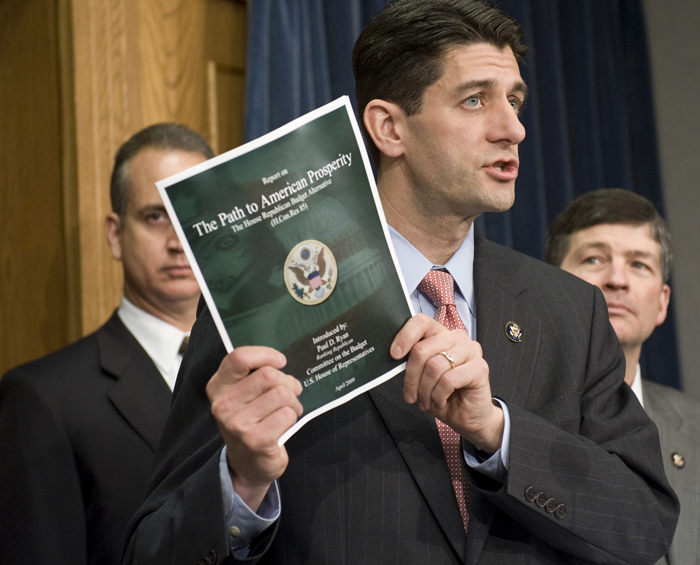Ever since Rep. Paul Ryan (R-WI), the GOP’s top budget guy, unveiled a proposal to slash and privatize entitlements in order to reduce long-term deficits, the media–and even some Democratic politicians–have praised the plan as a serious way to save money. The plan may be conservative, they say, but at least it takes a serious, honest stab at averting fiscal catastrophe. Ryan even had the Congressional Budget Office score the package, and they found that, by mid-century, it would eliminate federal deficits.
But it turns out that’s not even close to true.
As we reported a month ago, the CBO’s analysis of the Ryan plan was drawn up based upon revenue projections Ryan himself provided. The CBO doesn’t analyze the impact of tax policy on revenue, so they were unable to estimate how Ryan’s policy prescriptions would actually impact revenues–and just took Ryan’s numbers at face value. Turns out, those numbers were pure fantasy.
The Tax Policy Center–a non-partisan think tank–did a thorough analysis on the impact of the tax changes Ryan proposes–a massive tax cut for the wealthy, paired with substantial tax increases on 90 percent of the country–and found that the so-called “Roadmap” would actually leave the federal government desperately starved for funds.
According to the Center for Budget and Policy Priorities, “the Ryan plan would result in very large revenue losses relative to current policies.”
[The Tax Policy Center] estimates that even with its middle-class tax increases, the plan would reduce federal revenues to 16 percent of GDP in 2014. Because the tax cuts for the wealthy would dwarf the tax increases for the middle class, the Ryan plan would allow the federal debt to continue growing for a number of decades to come, despite its steep cuts in Medicare, Medicaid, and Social Security.
The result, they conclude, is ballooning, unsustainable deficits–a quirky feature for a plan touted far and wide for its potential to right the country’s fiscal course. And yet, Ryan’s star is on the rise in the GOP and in Washington.
By contrast to the Ryan Roadmap, President Obama’s budget would increase revenues as a share of GDP from 14.5 percent in 2010 to 19.6 percent in 2020. There would still be deficits at that point–but at a much more sustainable level than under the GOP alternative.










